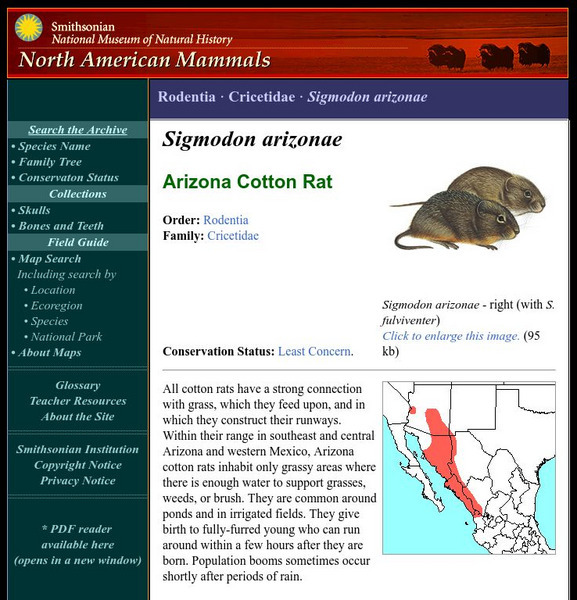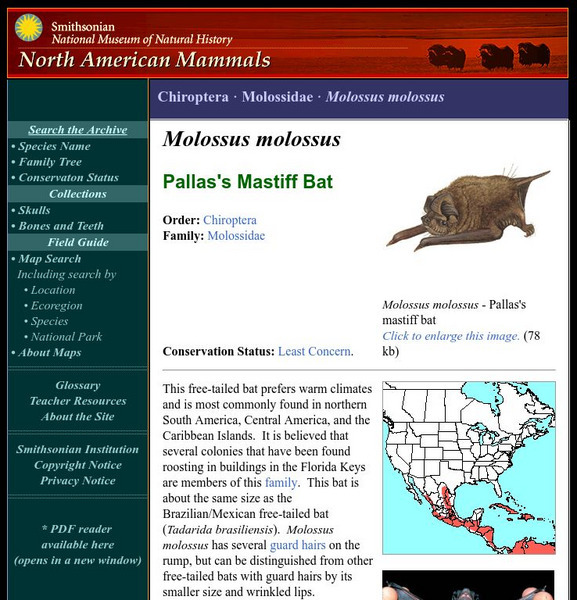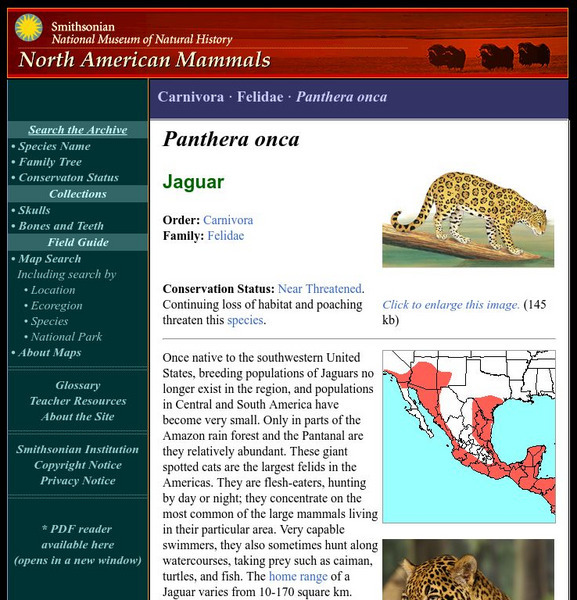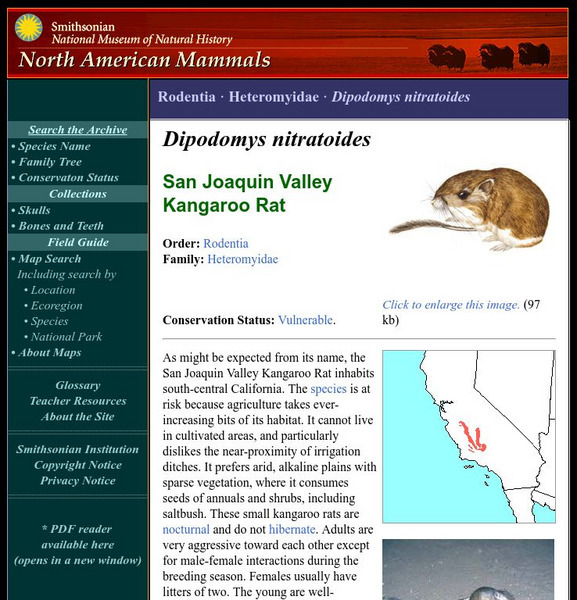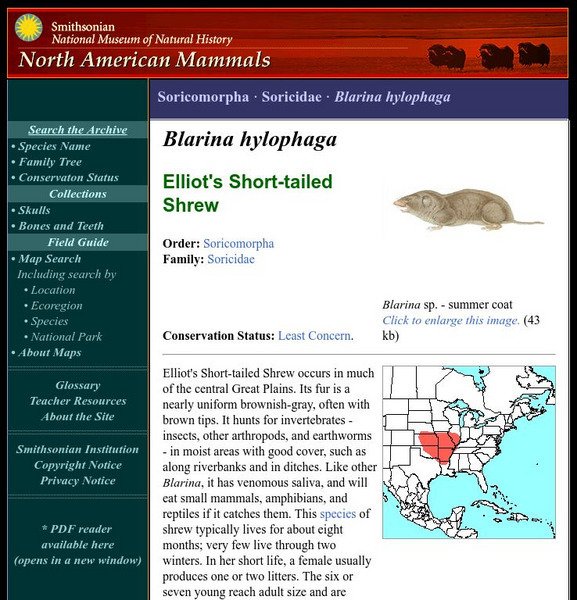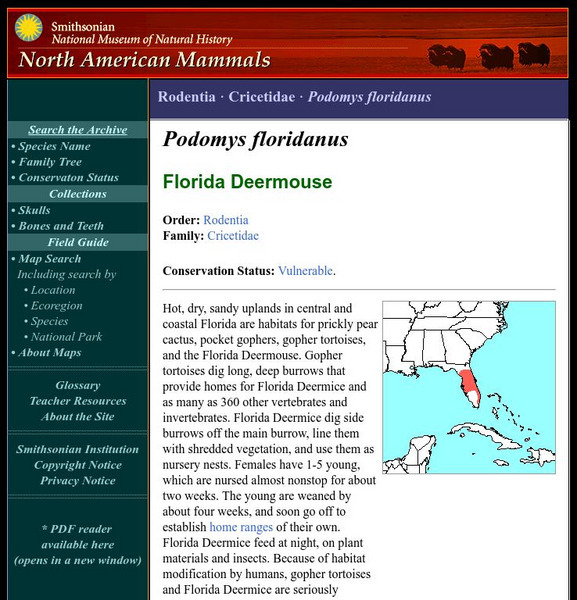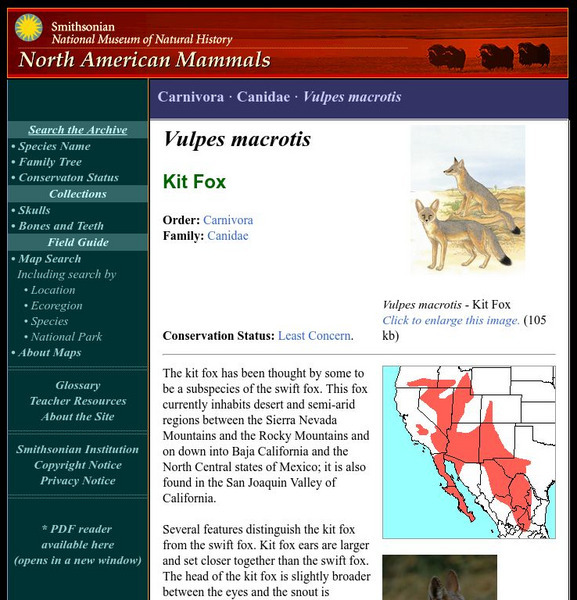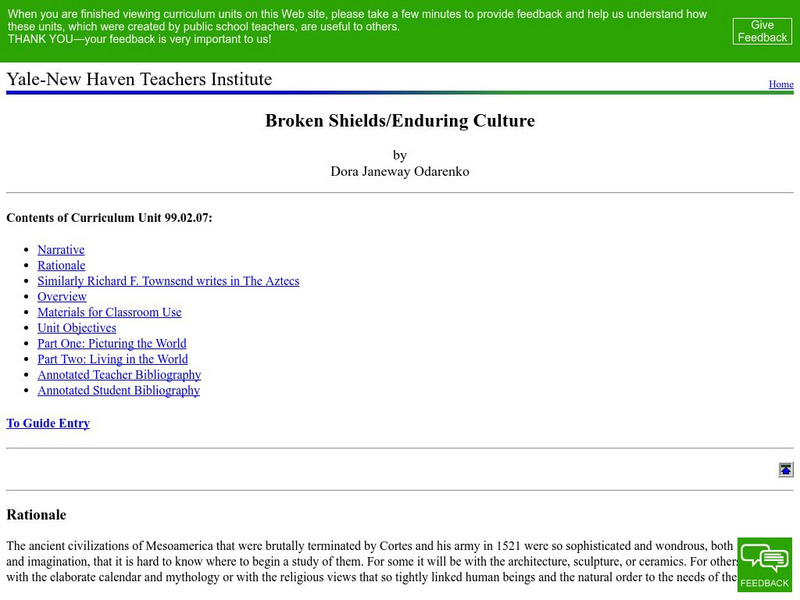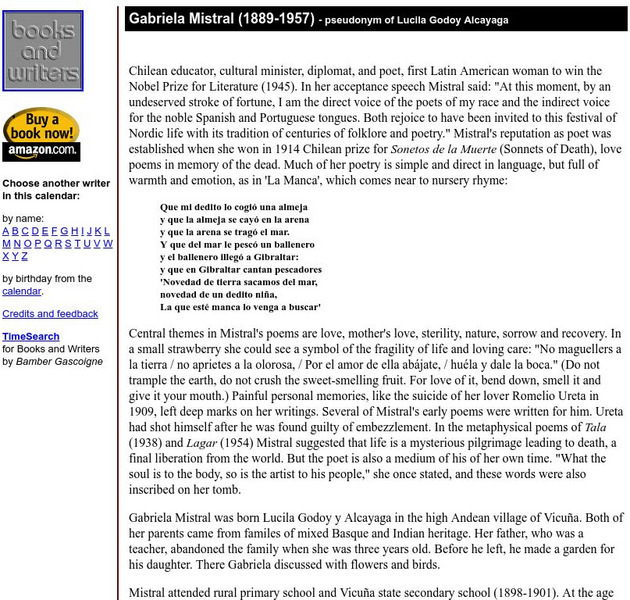Smithsonian Institution
National Museum of Natural History: American Mammals: Arizona Cotton Rat
All cotton rats have a strong connection with grass, which they feed upon, and in which they construct their runways. Within their range in southeast and central Arizona and western Mexico, Arizona cotton rats inhabit only grassy areas...
Smithsonian Institution
National Museum of Natural History: American Mammals: Eastern Red Bat
Common and widespread from far southern Canada throughout most of the United States and Mexico, and farther south through Central America and into South America, the Eastern Red Bat requires trees and shrubs for roosting. It is...
Smithsonian Institution
National Museum of Natural History: American Mammals: Osgood's Mouse
Osgood's Mouse is a very close relative of the Pinyon Mouse but is larger, and its tail is longer than the head and body. Osgood's Mouse lives in the mountains of southern New Mexico and throughout mountainous central Mexico. Learn more...
Smithsonian Institution
National Museum of Natural History: American Mammals: Mt. Lyell Shrew
The Mt. Lyell Shrew occurs only in the central Sierra Nevada Mountains of California and is found only at elevations above 2,000 m. Learn more about the Sorex lyelli, more commonly known as a Mt. Lyell Shrew, in this easy-to-read species...
Smithsonian Institution
National Museum of Natural History: American Mammals: Nelson's Pocket Mouse
Nelson's Pocket Mice live in the Chihuahuan Desert of north-central Mexico and adjacent parts of western Texas and southern New Mexico. They are found mostly in rocky areas where there are some shrubs to provide cover. Learn more about...
Smithsonian Institution
National Museum of Natural History: American Mammals: Wyoming Ground Squirrel
Wyoming Ground Squirrels are found in three separate regions of the western United States at elevations above 1,500 meters. Their geographic centers are in southwestern Montana, central and southwestern Wyoming, and southwestern Idaho,...
Smithsonian Institution
National Museum of Natural History: American Mammals: Wyoming Pocket Gopher
Wyoming Pocket Gophers are known only from a small area in south-central Wyoming. These rather small Pocket Gophers seem to prefer loose, gravelly, upland soils, often where greasewood is growing. Learn more about the Thomomys clusius,...
Smithsonian Institution
National Museum of Natural History: American Mammals: Pallas's Mastiff Bat
This free-tailed bat prefers warm climates and is most commonly found in northern South America, Central America, and the Caribbean Islands. It is believed that several colonies that have been found roosting in buildings in the Florida...
Smithsonian Institution
National Museum of Natural History: American Mammals: Narrow Faced Kangaroo Rat
The Narrow-faced Kangaroo Rat, also known as the Santa Cruz Kangaroo Rat, occurs in central coastal California where annual rainfall is 75 cm and temperatures are moderate. It requires well-drained, deep soils and is often found on...
Smithsonian Institution
National Museum of Natural History: American Mammals: Texas Kangaroo Rat
Texas Kangaroo Rats live in only a few counties of north-central Texas, although the species was once also present in Oklahoma. They prefer to live where soils have a high percentage of clay. Learn more about the Dipodomys elator, more...
Smithsonian Institution
National Museum of Natural History: American Mammals: Jaguar
Once native to the southwestern United States, breeding populations of Jaguars no longer exist in the region, and populations in Central and South America have become very small. Only in parts of the Amazon rainforest and the Pantanal...
Smithsonian Institution
National Museum of Natural History: American Mammals: Fresno Kangaroo Rat
As might be expected from its name, the Fresno Kangaroo Rat inhabits south-central California. The species is at risk because agriculture takes ever-increasing bits of its habitat. Learn more about the Dipodomys nitratoides, more...
Smithsonian Institution
National Museum of Natural History: American Mammals: Elliot's Short Tailed Shrew
Elliot's Short-tailed Shrew occurs in much of the central Great Plains. Its fur is a nearly uniform brownish-gray, often with brown tips. Learn more about the Blarina hylophaga, more commonly known as Elliot's Short-tailed Shrew, in this...
Smithsonian Institution
National Museum of Natural History: American Mammals: Florida Mouse
Hot, dry, sandy uplands in central and coastal Florida are habitats for prickly pear cactus, pocket gophers, gopher tortoises, and the Florida Mouse. Gopher tortoises dig long, deep burrows that provide homes for Florida Mice and as many...
Smithsonian Institution
National Museum of Natural History: American Mammals: Kit Fox
The kit fox has been thought by some to be a subspecies of the swift fox. This fox currently inhabits desert and semi-arid regions between the Sierra Nevada Mountains and the Rocky Mountains and on down into Baja California and the North...
Smithsonian Institution
National Museum of Natural History: American Mammals: Mexican Long Tongued Bat
Mexican long-tongued bats feed on fruits, pollen, nectar, and probably insects. The populations that summer in the United States migrate to Mexico and northern Central America in winter, following the blooming cycle of plants such as...
Yale University
Yale New Haven Teachers Institute: Enduring Culture Lesson Plans
This unit on Mesoamerican and Mayan culture contains lesson plans, a list of materials, objectives, bibliographies, and much more. The lessons could also be adapted to various grades.
Khan Academy
Khan Academy: Us History: 1945 1980: Massive Resistance and the Little Rock Nine
Read about resistance to desegregation and the nine African American students who dared to integrate Little Rock's Central High School.
Library of Congress
Loc: Migration During the Great Depression: Living History
Most people in Central Florida came from somewhere else. Students first analyze life histories from American Life Histories: Manuscripts from the Federal Writers' Project, 1936-1940 to learn oral history techniques. They then interview...
Authors Calendar
Author's Calendar: Molnar, Ferenc
A good, comprehensive biography Ferenc Molnar, the "Hungarian-American playwright, director, novelist, short-story writer, and journalist."
PBS
Pbs Learning Media: Collection: Anti Asian Racism: Connections in History
This collection of educational resources will help students make sense of anti-Asian racism today by connecting it with history. Americans of Asian descent have lived and contributed to the development of the United States. The first...
Authors Calendar
Author's Calendar: Gabriela Mistral
Gabriela Mistral, the first Latin American woman to win the Nobel Prize in Literature, is profiled as well as her poems and work in education reform.
Digital History
Digital History: The Formative Decade
The first decade of the new American nation saw much development and progress, but there was still contention about what the national government's role would be. Read about the differing views of Thomas Jefferson and Alexander Hamilton.
Authors Calendar
Author's Calendar: Czeslaw Milosz
Czeslaw Milosz, "Polish-American author, translator and critic, awarded the Nobel Prize for Literature."
Other popular searches
- Central American History
- Central American Immigration
- Central American Author
- Central American Culture
- Central American Artist
- Central American Money
- Central American Countries
- Central American Geography
- Central American Maps
- \"Central American History\
